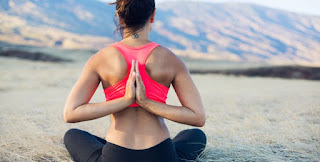The Best Exercises to Increase Your Flexibility

An important and all-too-frequently overlooked part of fitness is flexibility training. As most people focus on their cardiovascular fitness and strength, flexibility exercises are often forgotten. Being limber by increasing your flexibility will help you with a host of other exercises as well as make your day-to-day tasks easier and safer. Doctors and physical therapists agree — you must tackle fitness with a three-pronged approach by including cardiovascular exercise, strength training, and flexibility conditioning.
As you age, your tendons, muscles, and ligaments will lose some of their elasticity. Additionally, our culture has gradually become more sedentary, and those of you who spend much of your day sitting at a desk are more prone to decreased flexibility and tightness. Improving flexibility does so much more than help you prevent injury. In fact, being flexible improves posture, which in turn allows you to show off that hot bod you’ve been working so hard on. Countless hours at the gym and diligently sticking to your healthy, well-balanced diet will not get you far if you routinely slouch. Improving your flexibility also helps you perform exercises that require a full range of motion, such as squats or dead lifts. As you stretch your muscles, you are lengthening your muscle fibers (tendons) that attach them to your bones. The longer your muscle fibers are, the larger the size of the muscles you can achieve through strength training exercises.
Stretching to increase flexibility also boosts circulation, thus helping to decrease your odds of developing various chronic diseases such as diabetes.
Yoga
While most people know that yoga can help reduce stress and improve focus, did you realize that yoga is also an excellent way to build muscle and enhance your flexibility and balance? All types of yoga can up your flexibility and strength, both with static poses where you are holding a pose for several seconds, or continually moving throughout poses.
Pilates
While pilates does not specifically emphasize flexibility to the degree that yoga does, it does build strength — specifically core strength. Improving your core strength through pilates will increase your balance in yoga, ultimately resulting in greater flexibility. Consider pilates and yoga to be complementary. If you seek out an experienced pilates instructor and stress that flexibility be one of your overarching goals, that teacher can accommodate your request and incorporate extra flexibility training into the class.
Exercise Bands
Exercise bands are affordable, easy, effective, adaptable to a variety of fitness levels, can be used to exercise your entire body, and can be using with your current workout routine. Exercise bands improve flexibility without risk of injury and can be used practically anywhere.
Dancing
Dance takes every part of your body through a wide range of motion, improving flexibility and utilizing small muscle groups that may otherwise get neglected through traditional exercises, especially exercise machines. Dancing greatly improves your agility and combines both flexibility training with cardio, and you can easily add ankle weights or arm cuff weights to the intensity.
Foam Rollers
Foam rollers come in a variety of shapes and sizes, but they are all designed to help you loosen the muscle fascia, increase circulation, and improve flexibility through something called “self-myofascial release.” Foam rollers can specifically help you ease tension on your IT band, lengthen your hamstrings, and enhance your spinal extension.
Calisthenics
Lunges and squats can do more than just make your butt look great in jeans — they are excellent exercises for improving your flexibility. Walking lunges, curtsy lunges, and side to side lunges all work different muscles and develop your flexibility. Add squats and push-ups to your routine to squeeze in some flexibility and strength training that can be done with no costly equipment or gym membership.








No comments: